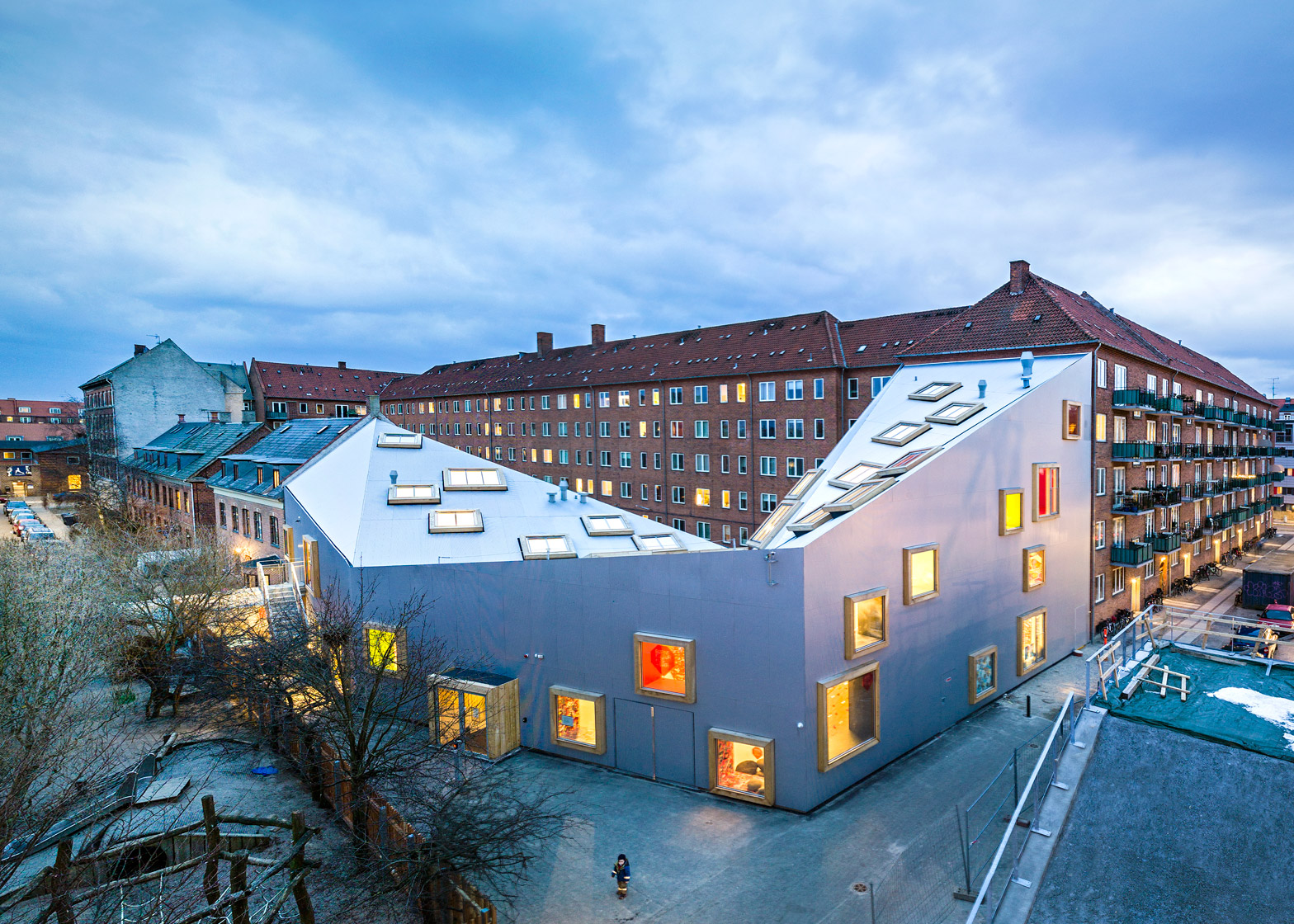One corner of this aluminium-clad children's centre in Copenhagen by Danish architect Dorte Mandrup dips down to let sunlight pass into a courtyard behind.
The Ama'r Children's Culture House is situated in the Øresundsvej neighbourhood of Amager, Copenhagen's most densely populated island.
The L-shaped volume is fixed at either end to two existing brick blocks to form a continuous loop around a courtyard, and slopes down at its corner so as not to block views for residents to its rear.
The building's form is reminiscent of BIG's 8 House, which is also located on Amager and has a figure-of-eight plan that sinks at one corner to frame views of the verdant landscape surrounding the housing scheme.
"Located on a street corner, the structure mediates between the adjoining brick buildings, which are of different height. In its form and use of materials, however, the centre is quite distinct," said Mandrup.
"A silvery aluminium skin, perforated by square windows is drawn over the roof and outer walls and the lower height at the corner allows sunlight to enter the rear courtyard," she added.
"The expression of the Children's Culture House is surprising and imaginative: the roof and facades are treated the same, and the house does not have a 'start' and 'end' as ordinary houses do."
The facades and sloping roof are uniformly clad in sheets of corrugated aluminium and punctured by a smattering of square windows with wooden frames that draw natural light into the building's various levels.
Internally, the building's sloping flanks are organised like a mountain village, according to the architect. Terraces host different activities and open up sight lines to other parts of the building.
A tilted climbing floor runs alongside a staircase, and a house-shaped hideaway is nestled against the pitched roof.
To create a programme that would be suitable for children up to the age of 18, a combination of open, multifunctional spaces, alongside more structured and closed spaces for small groups including a theatre, were included.
Mandrup referred to a series of workshops held by visual artist Kerstin Bergendal to inform the design.
Bergendal conducted the workshops when the Øresundsvej neighbourhood – which is home to a host of former industrial buildings now used as recording studios for Copenhagen's underground music scene – was pinpointed for redevelopment in 2005.
"Children don't confine themselves to one particular thing or space; they dream up complex stories and adventures that take place simultaneously," said Bergendal. "What they want is an ideal playground – a beach, for instance – and not a perfectly designed space."
"The stranger a place seems, the better it can be filled with imaginative life," added the visual artist.
Several other neighbourhoods on Amager are undergoing significant redevelopment. Danish firm COBE is currently developing a new district around Bella Centre, the venue of the biannual design fair Northmodern, as well as a harbour-side masterplan in Christiansholm.
Dorte Mandrup founded her Copenhagen office in 1999 and has since designed a kindergarten in Sweden with a jagged timber form that is intended to be reminiscent of a sand dune, and an observation tower on Aarhus harbour that is perforated with circular "peek holes".
Photography is by Torben Eskerod, unless stated otherwise.
Project credits:
Architecture: Dorte Mandrup
Contractor: Anker Hansen
Engineer: Dominia
Client: Municipality of Copenhagen

